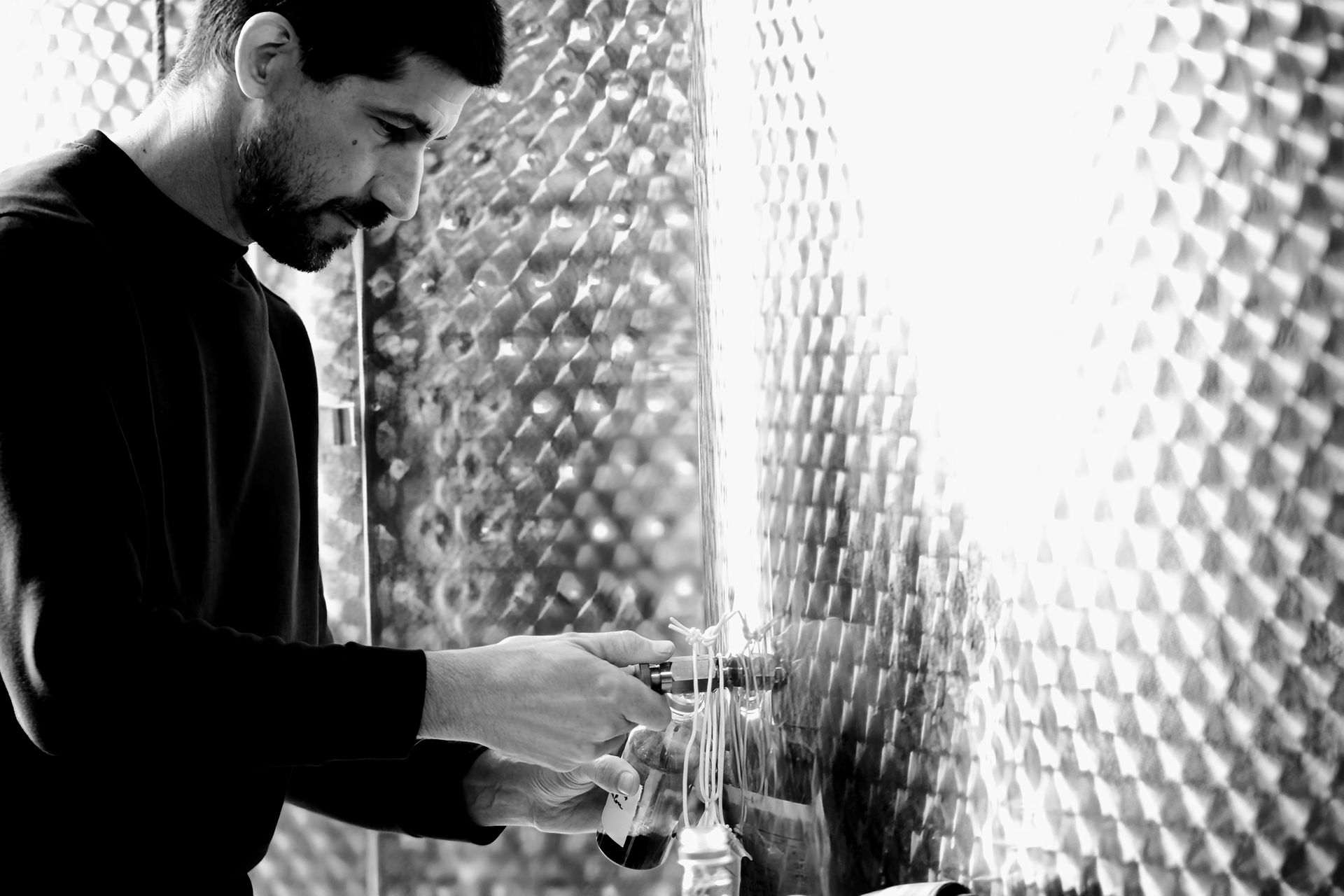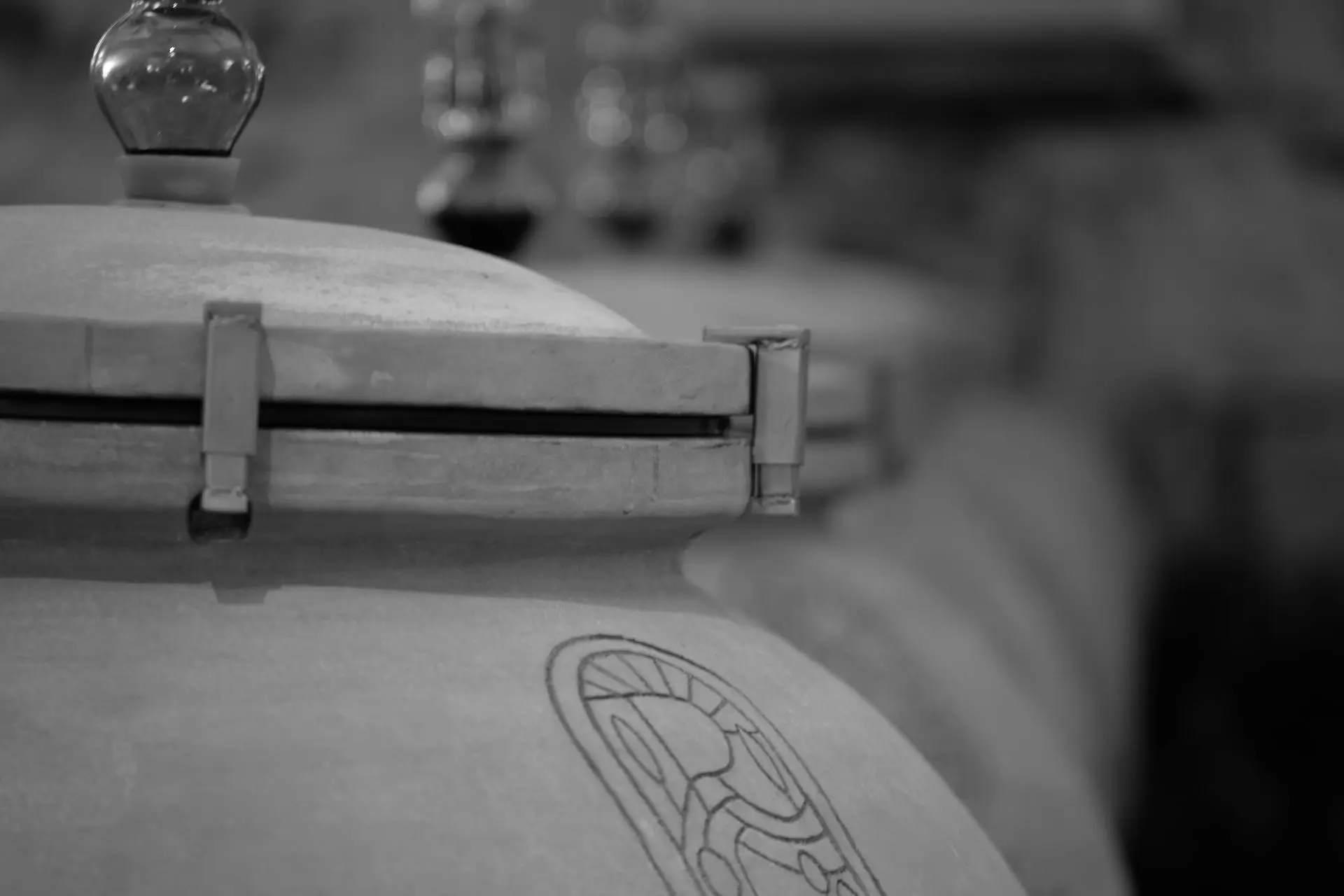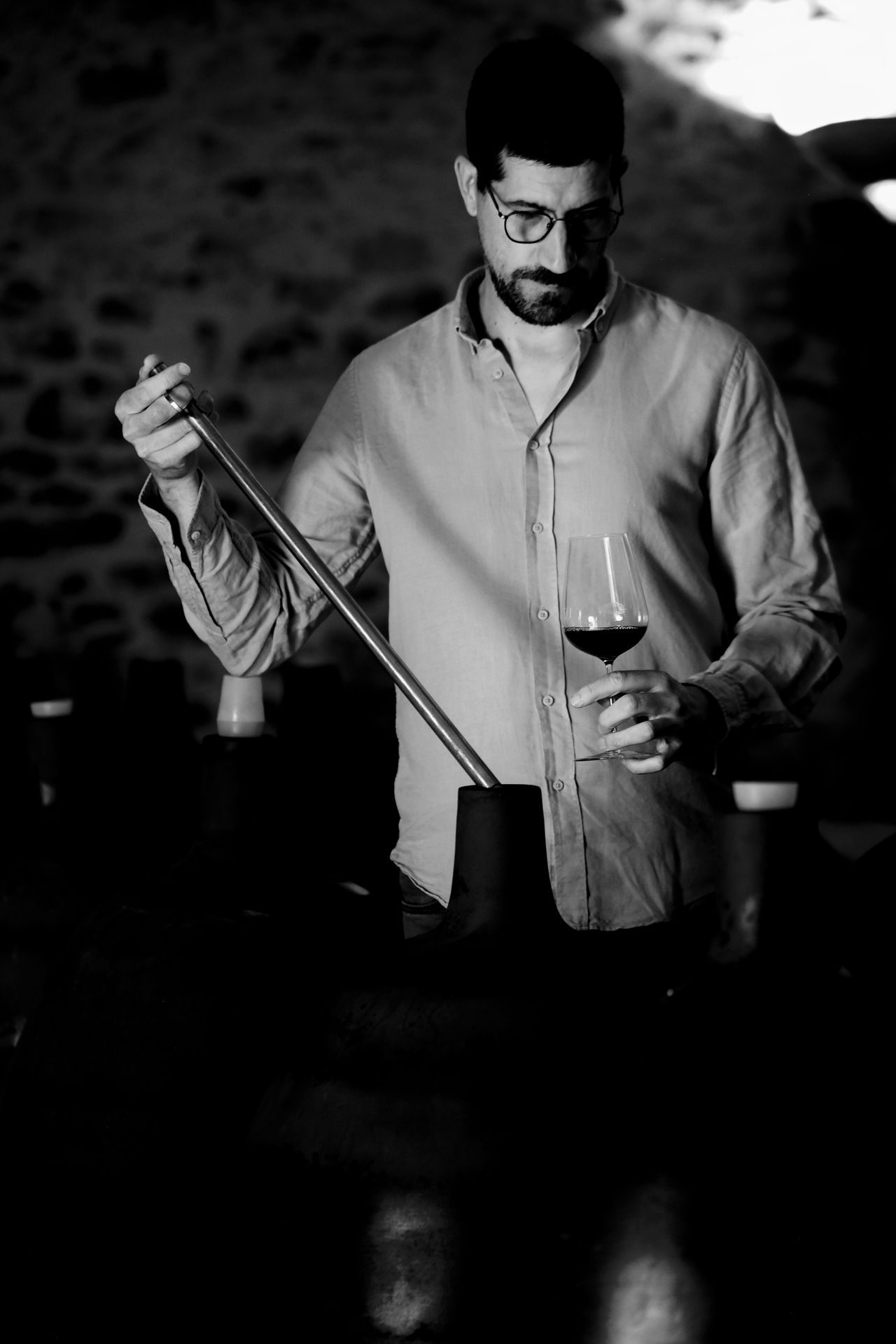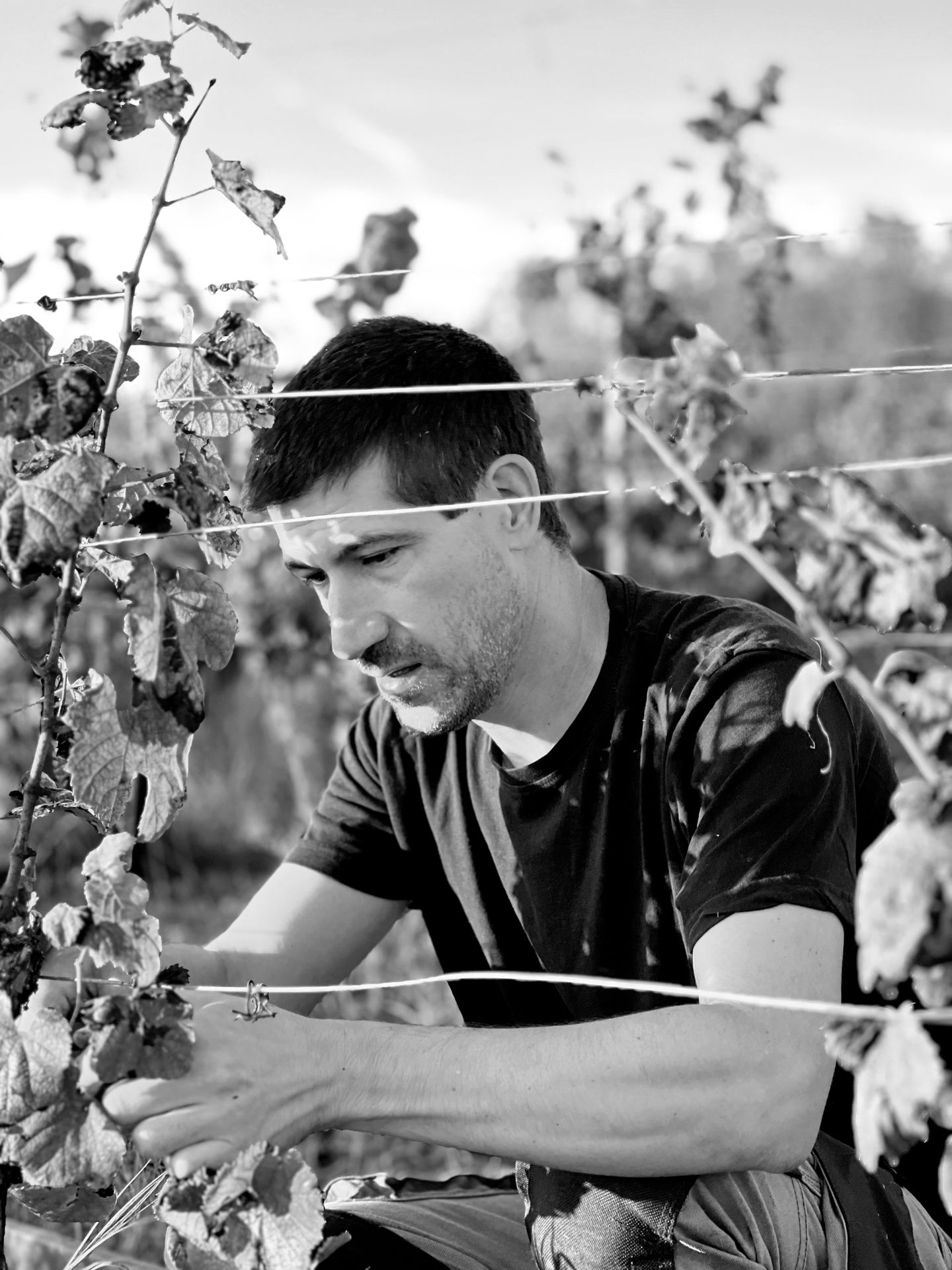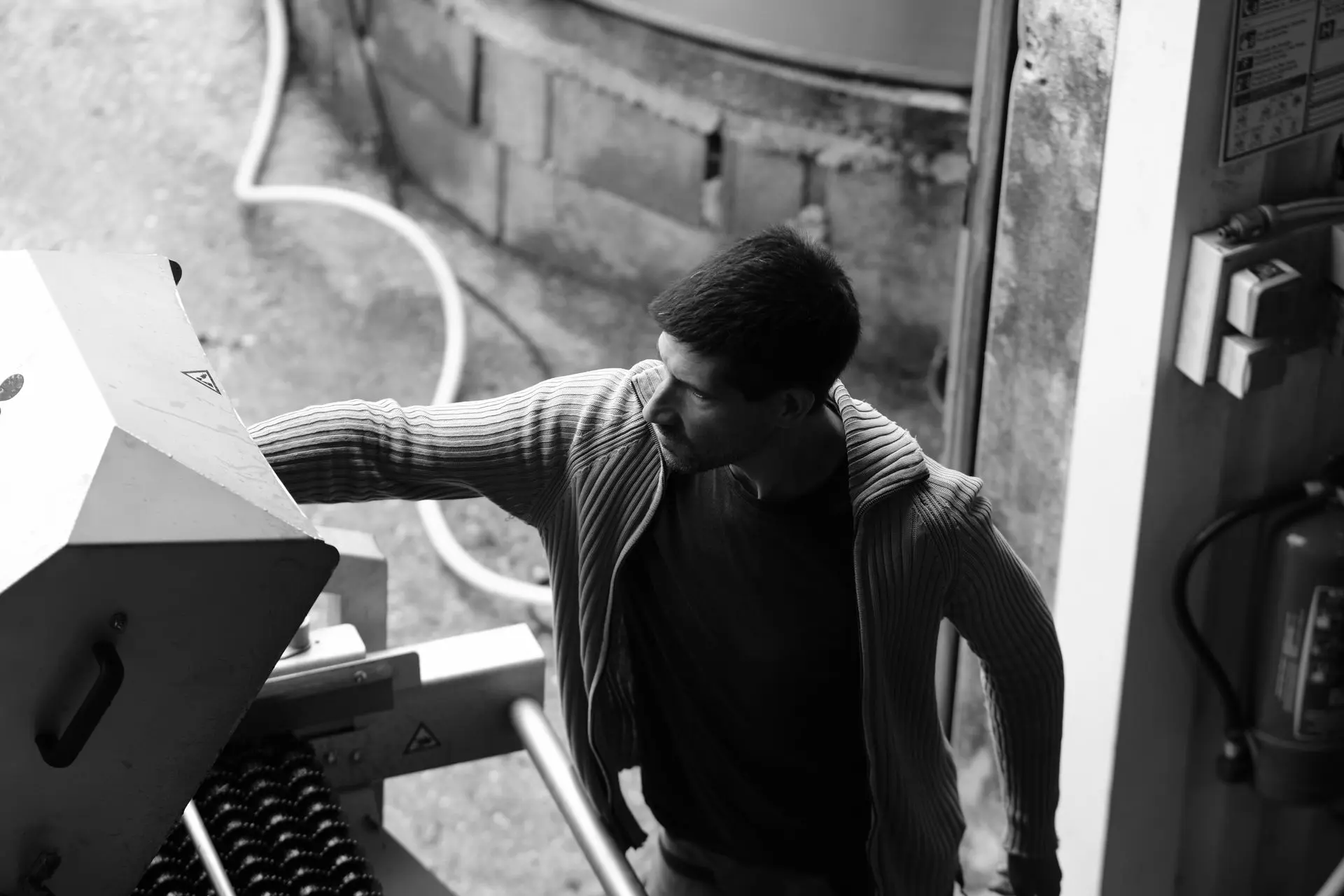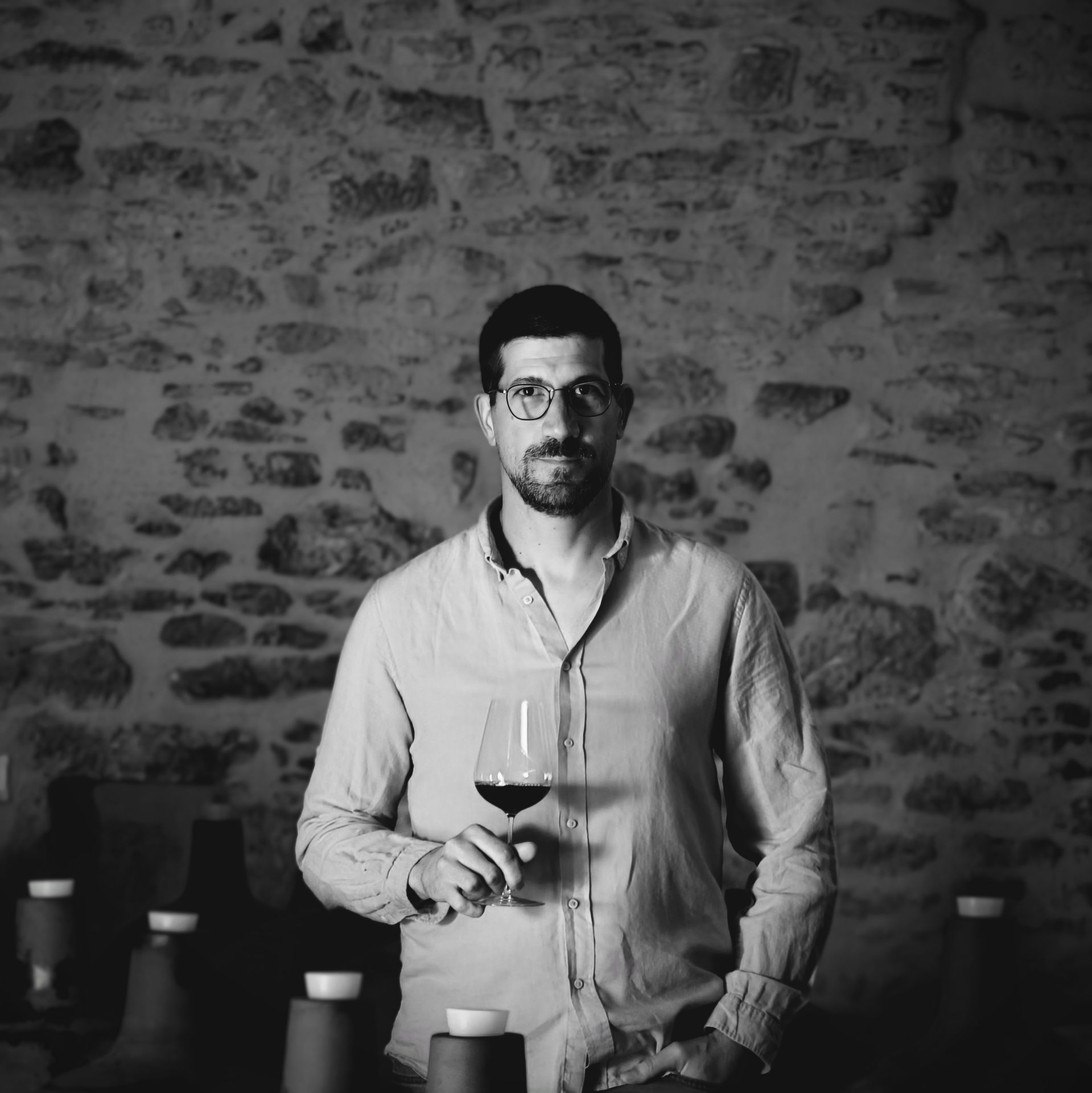« Regenerative viticulture:
listen to the earth, care for the living,
think of tomorrow »
Stéphane Revel
About Me
History
In 2022, I took over the reins of Château de Rouffiac with two partners, launching a new adventure for this estate steeped in history. The first vines were planted here in 1971, the same year as the birth of the Cahors AOC. With around 30 hectares of vineyards, my ambition is simple: to bring together tradition and modernity, with sincerity and high standards.
Commitments
I'm committed to regenerative viticulture, which puts the environment, people and economic common sense at the heart of every decision. Each bottle is the fruit of precise work, respectful of the living world and faithful to the identity of our terroir.
Today, we preserve the High Environmental Value (HVE) certification we inherited from the previous estate, and we have initiated a conversion to organic farming from 2023. In the medium term, I'd like to go even further, by enrolling the estate in a regenerative certification approach (ROC), still emerging in Europe, but full of promise. It's this vision, sustainable and committed, that I want to grow here in Rouffiac.
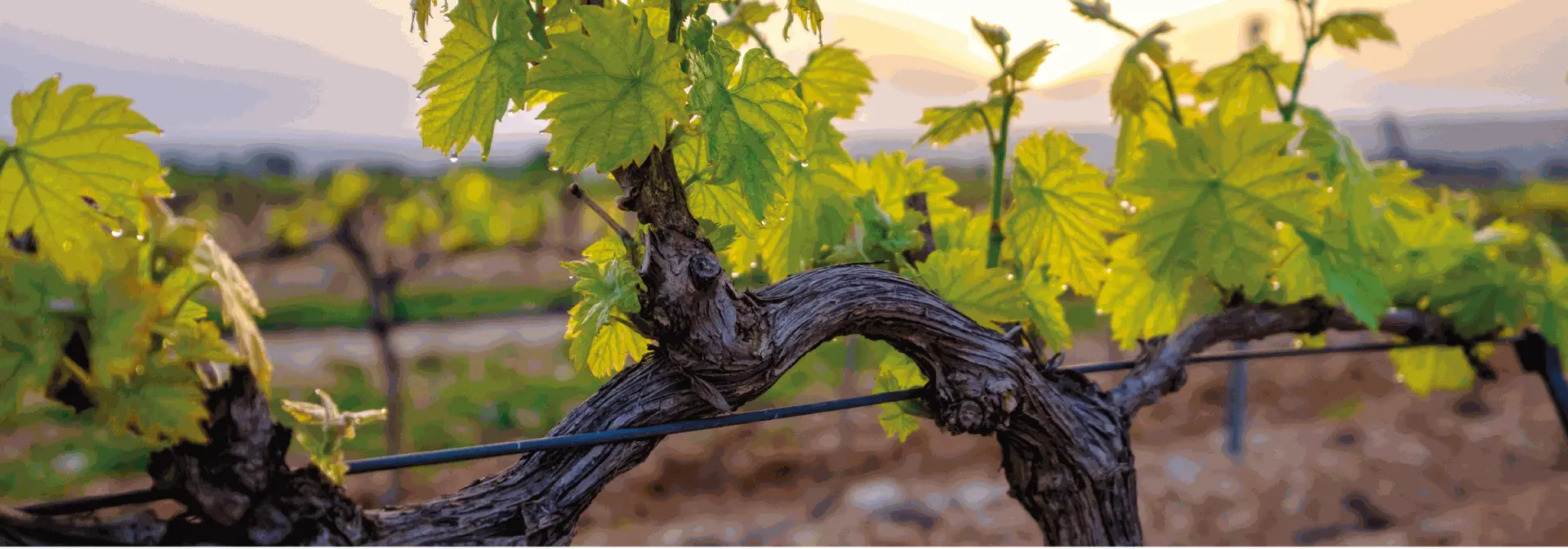
Certification
Regenerative Organic Certification (ROC) is an international label that aims to go beyond organic farming by integrating agricultural practices that restore soil, protect biodiversity and strengthen the resilience of ecosystems. It is based on three fundamental pillars: soil health, animal welfare and social equity for workers. Still in its infancy in Europe, this certification embodies a holistic vision of sustainable agriculture that looks to the future..
My Vision
Towards a living, autonomous and sustainable vineyard
For me, regenerative viticulture is not a fad, it's a given. It's a way of looking at the vineyard in all its complexity: the soil, the climate, the plants, the people. The aim? To create an autonomous and resilient ecosystem, capable of meeting the challenges of the climate without sacrificing the quality of the wines - quite the contrary.
There are no miracle recipes here, and no technology pushed to extremes. I base my approach on solid knowledge, on observations in the field, and on a simple logic: to bring the soil back to life so that it can better nourish the vines. This means using practical techniques: no-till soils, plant cover, increased biodiversity, stimulated microbial life... and as few or no inputs as possible.
All this isn't just good for the planet. It's good for the vine, good for the wine, and good for us. More living soil means less erosion, more water, more balanced grapes. And in the end, more expressive, healthier, truer wines.
Understanding this approach
I see regenerative viticulture as an adaptable toolbox. Each plot, each terroir, each climate requires a tailor-made response. We're not looking for perfection, but for constant improvement, with common sense and consistency.
It's an approach that goes further than mere sustainability: it aims to restore, repair and regenerate. read more It's for everyone, whatever their starting point - conventional, organic or biodynamic. What counts is the desire to move towards a soil that is more alive, capable of storing carbon and supporting biodiversity.
Our concrete commitments
In the face of climate change, I'm convinced that we need to change the way we make wine. That's why I've committed the estate to this transition. We're testing and adapting. For example, we have chosen to plant resistant grape varieties: they require less (or even no) treatment, which reduces our impact while preserving the expression of the terroir.
The integration of animals is a pillar of regenerative agriculture, even if in winegrowing it's still complex - but nothing can be ruled out in the future. What is certain is that every decision is guided by a single goal: to produce quality wines, without chemical residues, with respect for all living things, from the soil to the glass.
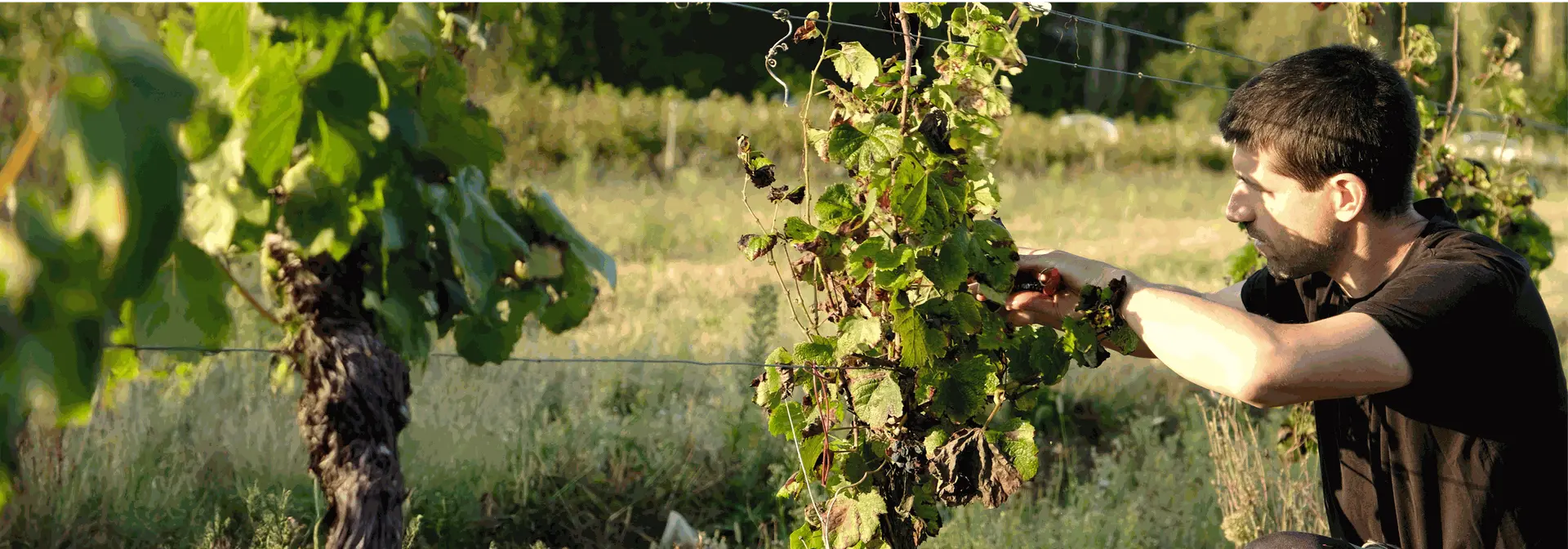
« Regenerative
Viticulture »
from Jamie Goode
Translated by Stéphane Revel
I invite you to discover Viticulture Régénératrice by Jamie Goode, an essential work that I had the pleasure of translating. It offers a clear, accessible and well-documented vision of the approach that drives me every day.
My Terroir
The estate
The Château de Rouffiac vineyard covers 26 hectares, of which a maximum of 18 hectares of vines, depending on the vintage, are used to produce Stéphane Revel's range of wines. The AOP Cahors vines are planted on the slopes of the Lot, in the communes of Duravel and Puy l'Evêque. The profile of the Lot valley offers winemakers a wide range of terroirs in which to produce exceptional wines, and Château de Rouffiac has vines spread over several of these terroirs.
The lands of Cahors
Siderolithic soils: This unique soil type is made up of clay, limestone and iron-rich rocks, allowing the vines to thrive in a warm, sunny climate. The limestone acts as a natural filter, allowing the vines to absorb essential minerals and nutrients from the soil, while the iron-rich rocks add a unique minerality to the grapes.
Clay-limestone soils: Clay-limestone soils are renowned for their ability to retain water, ensuring a regular supply of water for the vines. They also provide good drainage, encouraging root development and limiting the risk of grape rot. Limestone soils provide essential minerals that are reflected in the wines produced.
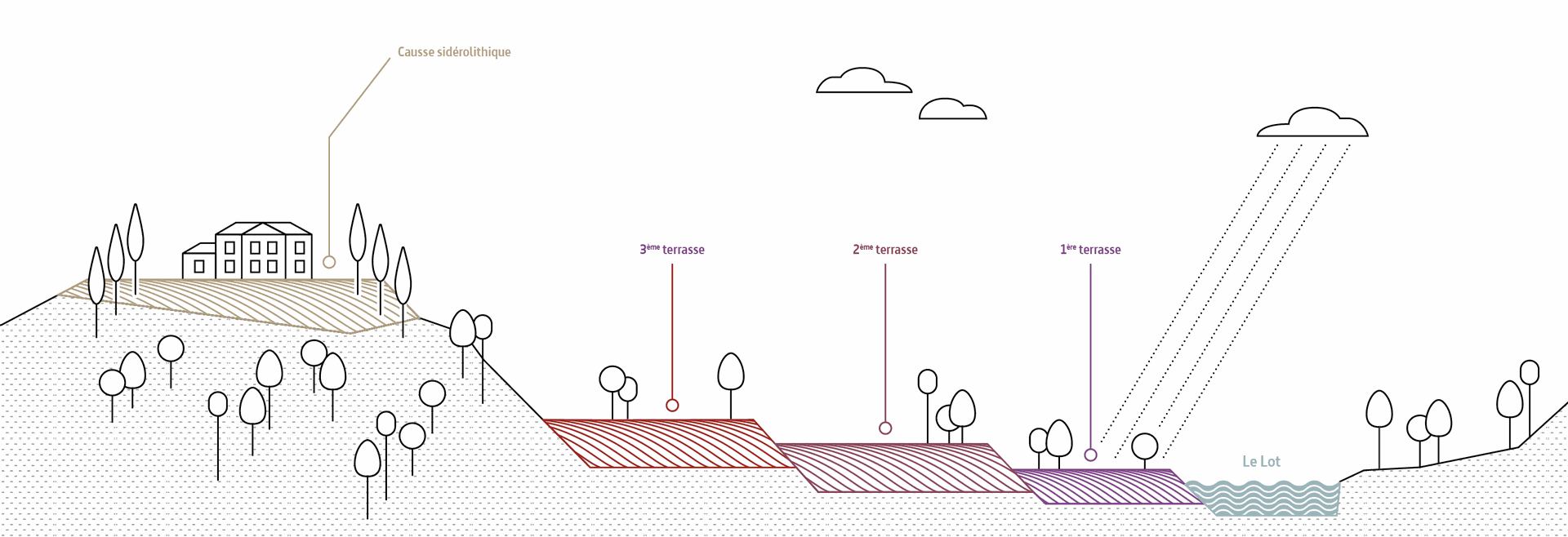
Our Vines
Our vines are located in the western part of the Cahors appellation, in the communes of Duravel and Puy-l'Evêque in the Lot department of the Occitanie region. Our vines are spread over the different types of soil in the appellation and are all on the right bank of the Lot, facing mainly south. Our terroir combines the advantages of clay-limestone soils, optimum sun exposure, varied altitudes and proximity to the river, creating ideal conditions for the production of great wines.
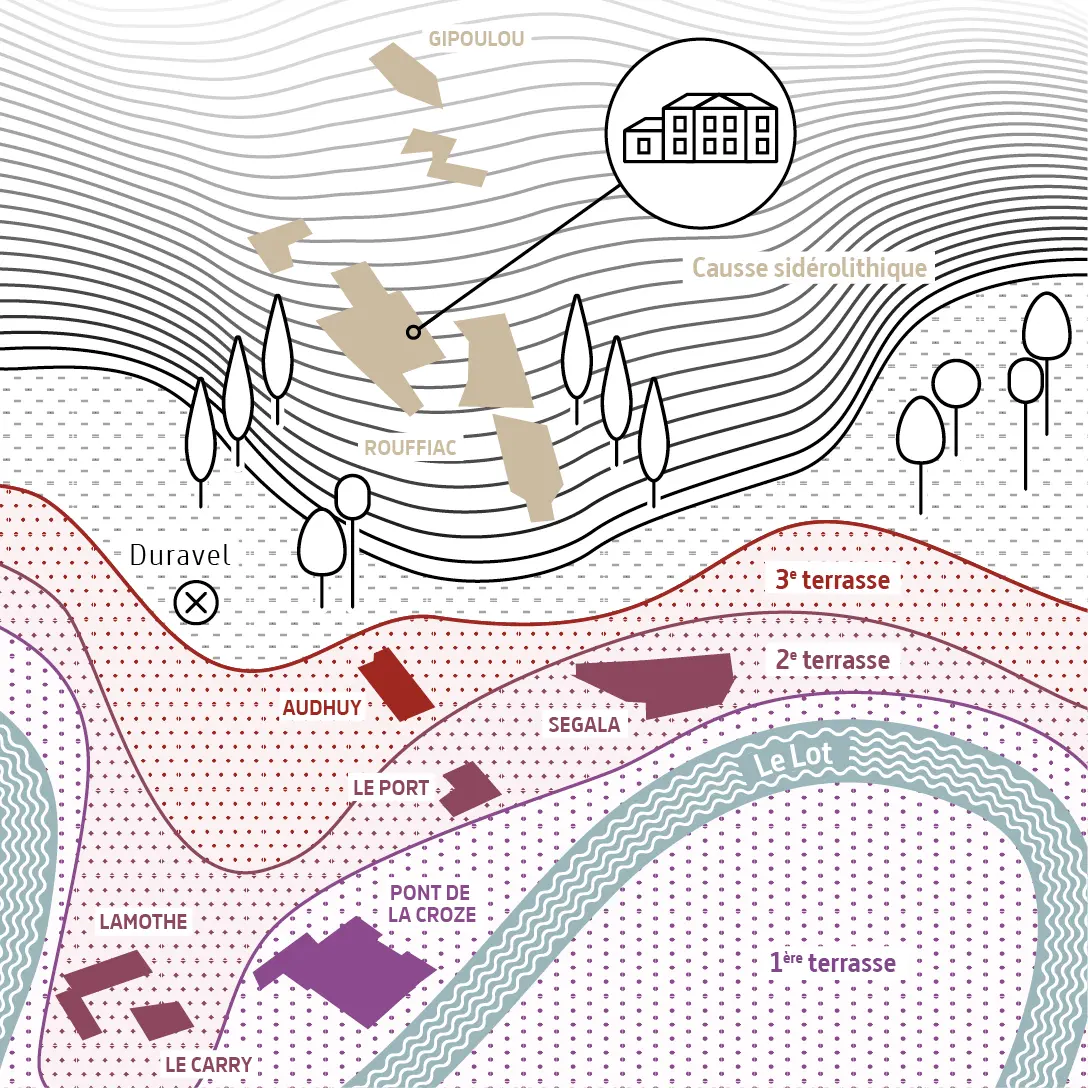
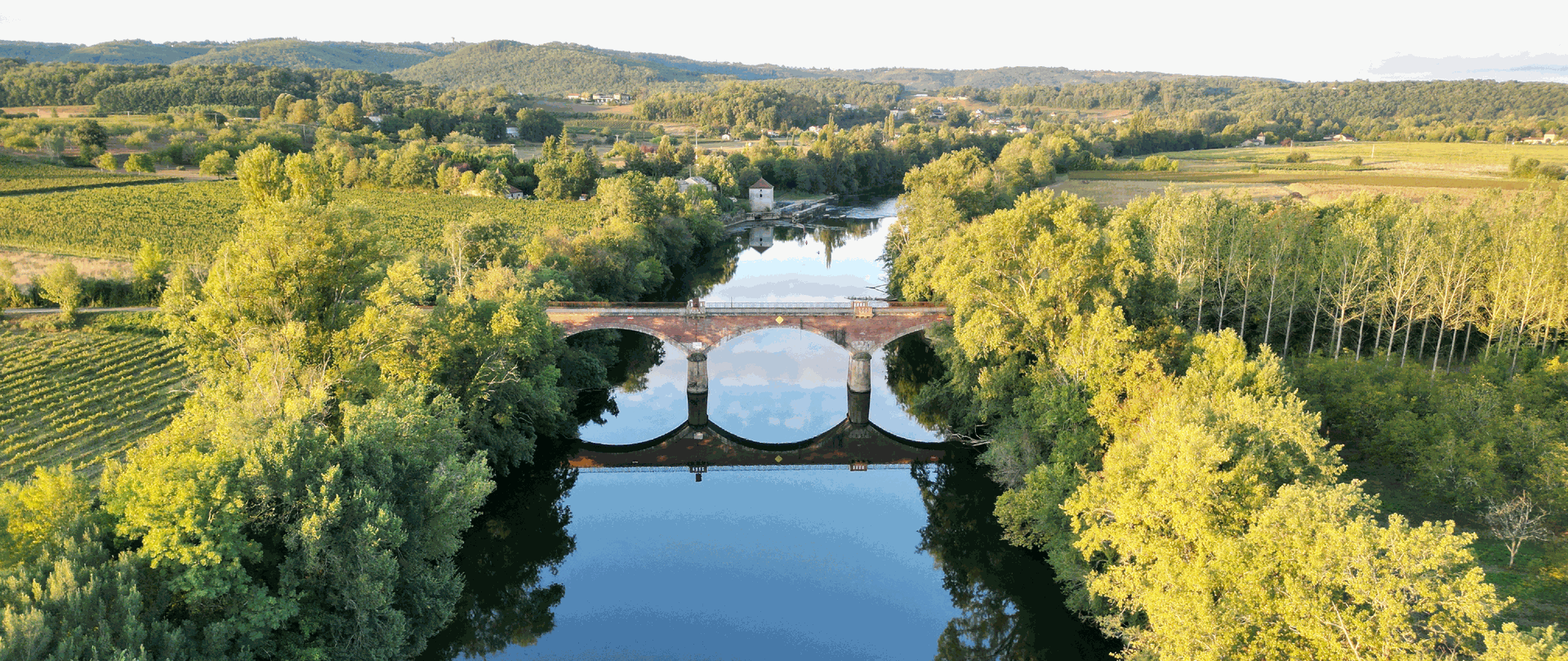
My Approach
Towards an autonomous and sustainable ecosystem
Regenerative viticulture is committed to transforming vineyards, as far as possible, into autonomous and sustainable ecosystems in the face of climate chaos. It considers the vineyard in its entire environment: agricultural, geographical and social.
Without any esotericism or techno-centrism, it is based on experimentation and all the scientific knowledge available to date. This approach uses a variety of ecological techniques, such as enhancing biodiversity, no-till tillage, stimulating the soil's microbial life, plant cover and biological pest control. The aim is to optimise the health of the soil and its ecosystem, resulting in stronger vines and better quality wines. The benefits are many: reduced erosion, better water retention, increased microbial activity, improved availability of nutrients, and improved air quality. By reducing the need for fertilisers, herbicides and fungicides, regenerative viticulture reduces costs and environmental impact, while improving wine quality thanks to soils enriched with organic nutrients and minerals.
Understanding regenerative viticulture
Regenerative viticulture, far from being a novelty, is a reinvention of traditional agricultural practices adapted to contemporary challenges. It is seen as an adaptable toolbox rather than a rigid set of rules. read more Practices vary according to the specific needs of each vineyard, helping to improve soil health and biodiversity. The aim is to promote healthy, living soil that contributes to biodiversity and climate mitigation. This method goes beyond sustainability, generating tangible ecological benefits both locally and globally. It is accessible to all levels of cultivation, from conventional to biodynamic, focusing on improving soil health and capturing carbon.
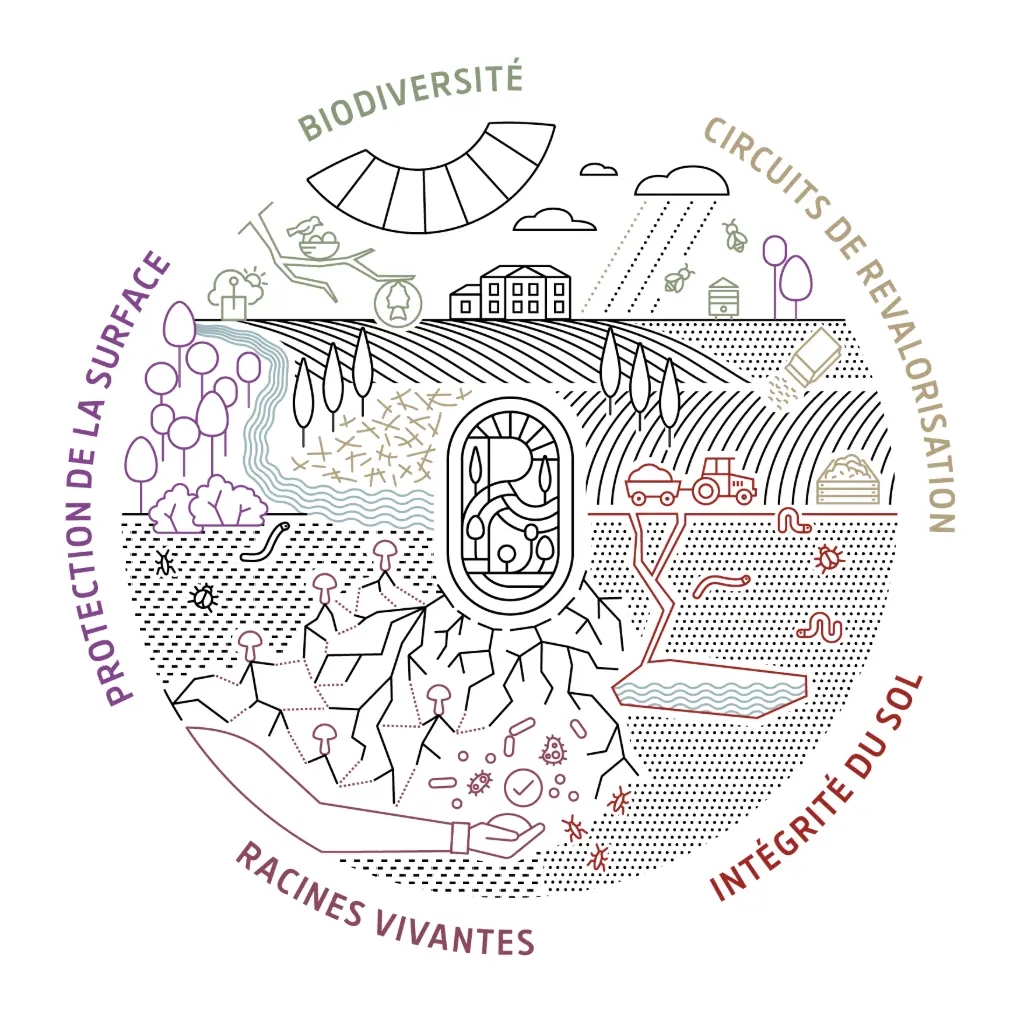
My commitments
In the face of the climate challenge, we recognise the need for more resilient and sustainable vineyards. Our transition to regenerative viticulture aims to create self-sufficient vineyards through a variety of ecological practices.
An important tool in regenerative agriculture is the integration of animals, which is thorny in the case of winegrowing, but there are successful examples under certain conditions. On the other hand, we have chosen to plant resistant grape varieties: as they do not require treatment, they will be a major asset in reducing our ecological impact. This decision reflects our awareness of the environmental and social issues facing the wine industry. Our motivations include preserving the ecosystem, responding to climate change, respecting consumer health and our commitment to sustainability. By favouring environmentally-friendly practices, we aim to produce quality wines without chemical residues and to promote a healthy lifestyle, while being a model of sustainability in the wine industry.
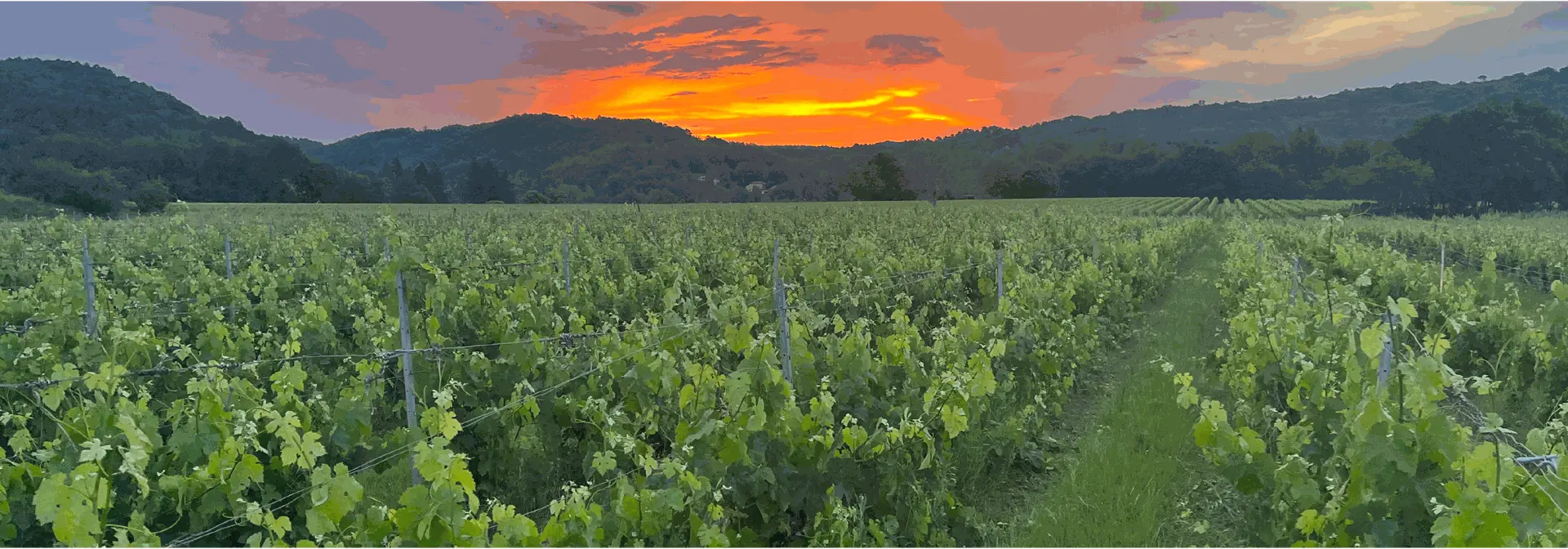
Sulphites (and others !)
All our wines are vinified without sulphites and with a minimum of inputs. In other words, from harvest to the end of fermentation, no sulfites are added to ensure maximum expression of fruity aromas. After fermentation, we sulfite the wines as little as possible, and well below the organic farming specifications, to ensure that they are perfectly preserved and to avoid any unpleasant surprises when you open them, whether on the evening of purchase or a few years later.
Our wines are vegan: we use no animal by-products in the vineyard (unlike in biodynamic viticulture) or in the cellar..
My Wines
An ancestral know-how
The wines I create at Château de Rouffiac are the fruit of this ancestral know-how that I have adopted, combined with modern winemaking methods. My ambition is to offer wines that embody all the complexity and depth expected of Cahors grands crus, but with a touch of elegance and finesse, a style that reminds me a little of my Burgundy roots.
At the heart of my production is, of course, the famous Malbec, the king of Cahors grapes. Most of my Cahors cuvées are made exclusively from this grape, in an effort to bring out its fruity, floral and mineral character to the full. Our cellar, located at the château in the hills above the appellation, is a place where experimentation has its rightful place. I'm keen to offer a range of different styles to satisfy all tastes.
It is with great pride that I present my three new cuvées, bearing my name: Stéphane Revel. Each one reflects a plot of land, an approach and a moment in my life as a winemaker.

NOVICIUS
2024
This is a vibrant, direct wine, full of freshness. It embodies the youth and spontaneity of Malbec, vinified to be enjoyed now.
This is the purest expression of the fruit, a wine to share with friends, without fuss.

AMPHORA
2023
This wine is matured in Tuscan terracotta jars - PDO Impruneta. These unique containers allow gentle micro-oxygenation, respecting the purest expression of Malbec, without the influence of wood.
The result is a wine of great purity, with intense aromas and a delicate texture - a true sensory voyage.
la Bergerie
2023
From my emblematic La Bergerie plot on the Causse, this cuvée is the reflection of meticulous work and a quest for depth.
This is a structured wine for ageing, expressing all the complexity of siderolithic soils. Its concentration and finesse will blossom over time, promising a fine evolution in the bottle.